Abstract
1. Nine subjects recorded oral temperature and collected unstimulated submandibular saliva and submandibular saliva stimulated by sour lemon drops at a constant flow rate of 1 ml./min, at about 07.00, 11.00, 14.00, 17.00 and 22.00 h daily for time spans of about 11 days. 2. Least-squares cosine waves were fitted to the data to test for the presence and characteristics of circadian rhythms and the results were subjected to cosinor analysis and the Rayleigh test to assess the statistical significance of any rhythms for the group of subjects as a whole (i.e. whether or not the computed acrophases were randomly distributed throughout the 24 h of the day). 3. Unstimulated submandibular saliva showed circadian rhythms, significant for the group as a whole, in flow rate and in the concentrations of sodium, potassium, magnesium, chloride and inorganic phosphate but not in protein or calcium. 4. Stimulated submandibular saliva showed circadian rhythms, significant for the group as a whole, in sodium, potassium, calcium, magnesium, chloride and inorganic phosphate but not in protein. Oral temperature also showed a significant circadian rhythm. 5. Because of the high amplitude of many of these rhythms, they must be taken into account when establishing the normal range of salivary values, or when salivary composition is to be used as an indicator of systemic disease or to be implicated in the aetiology of oral disease.
Full text
PDF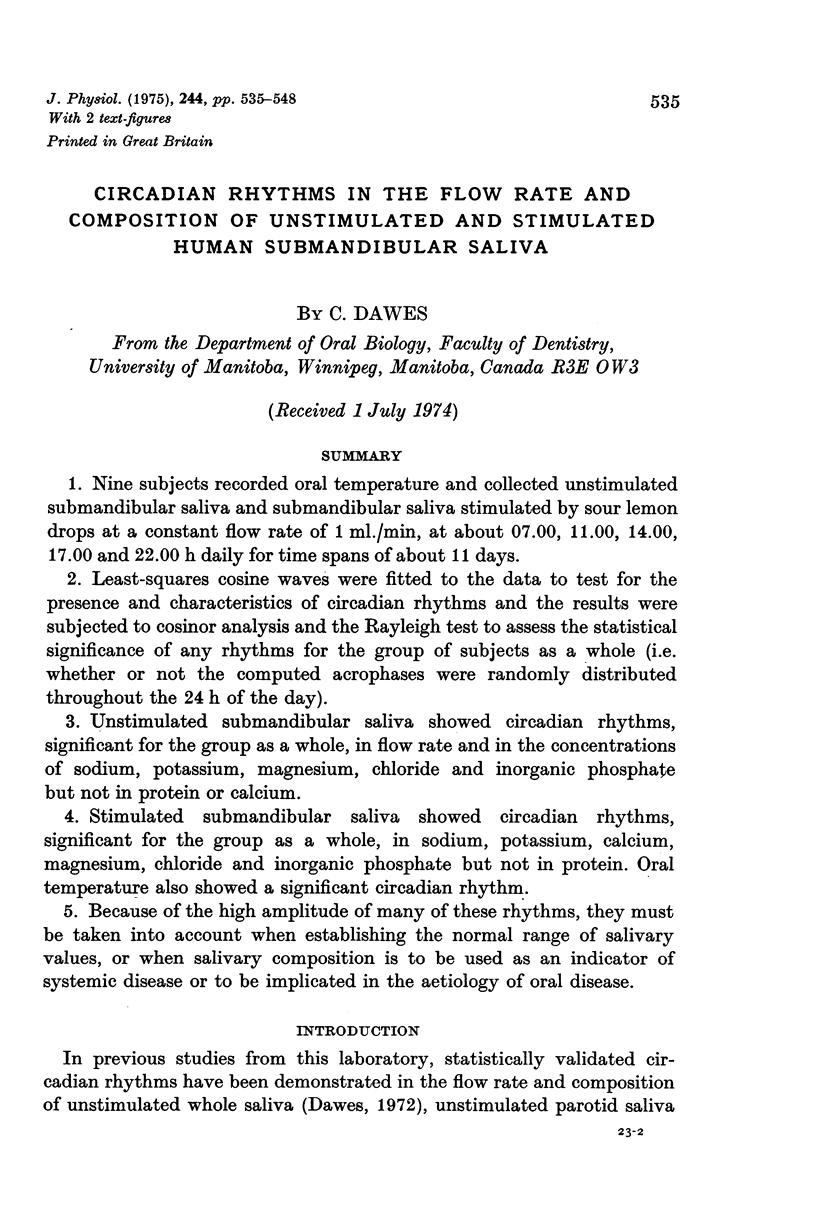
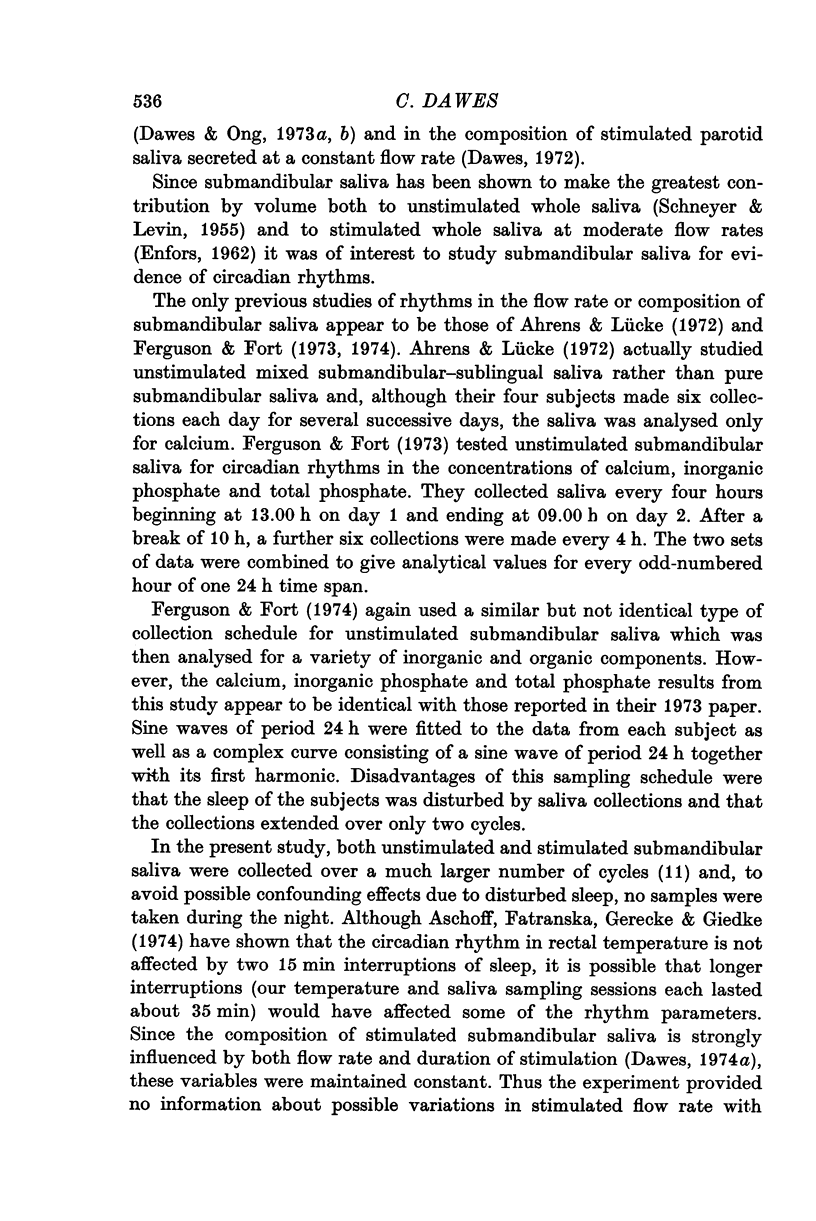
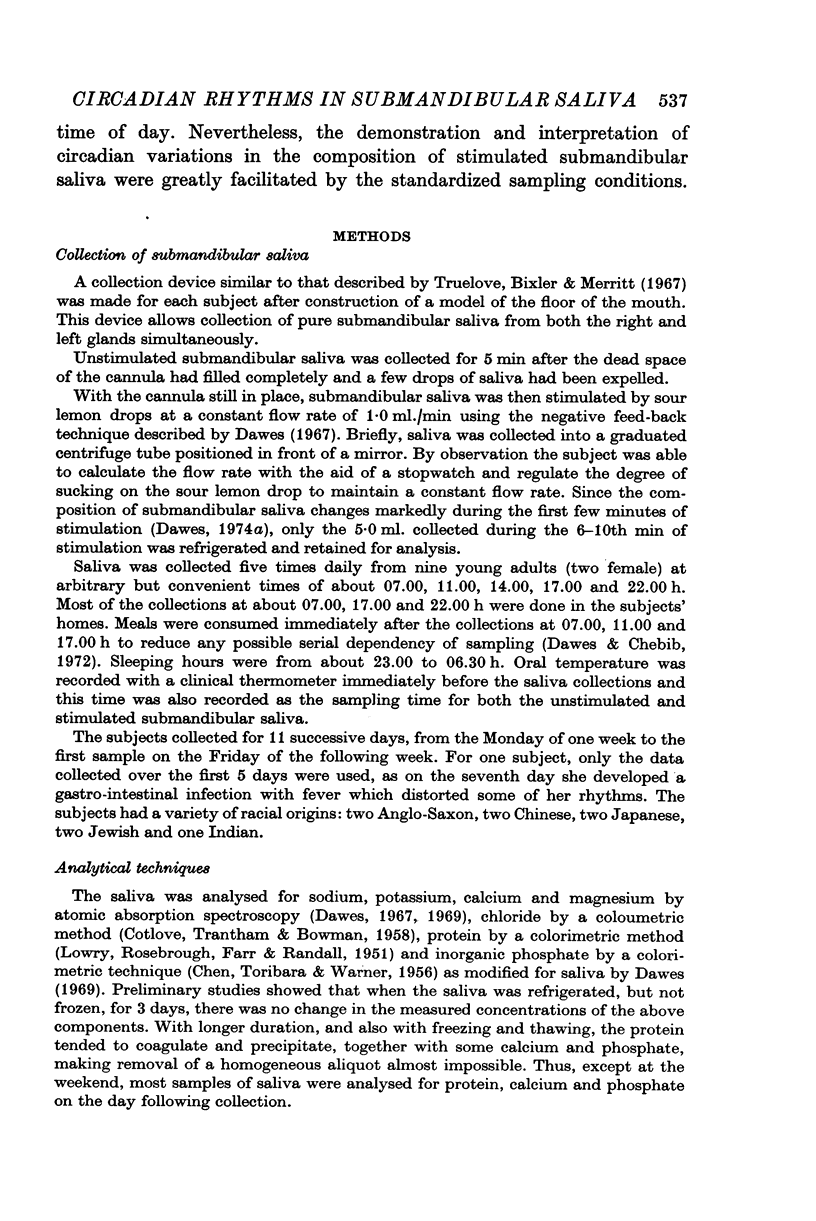
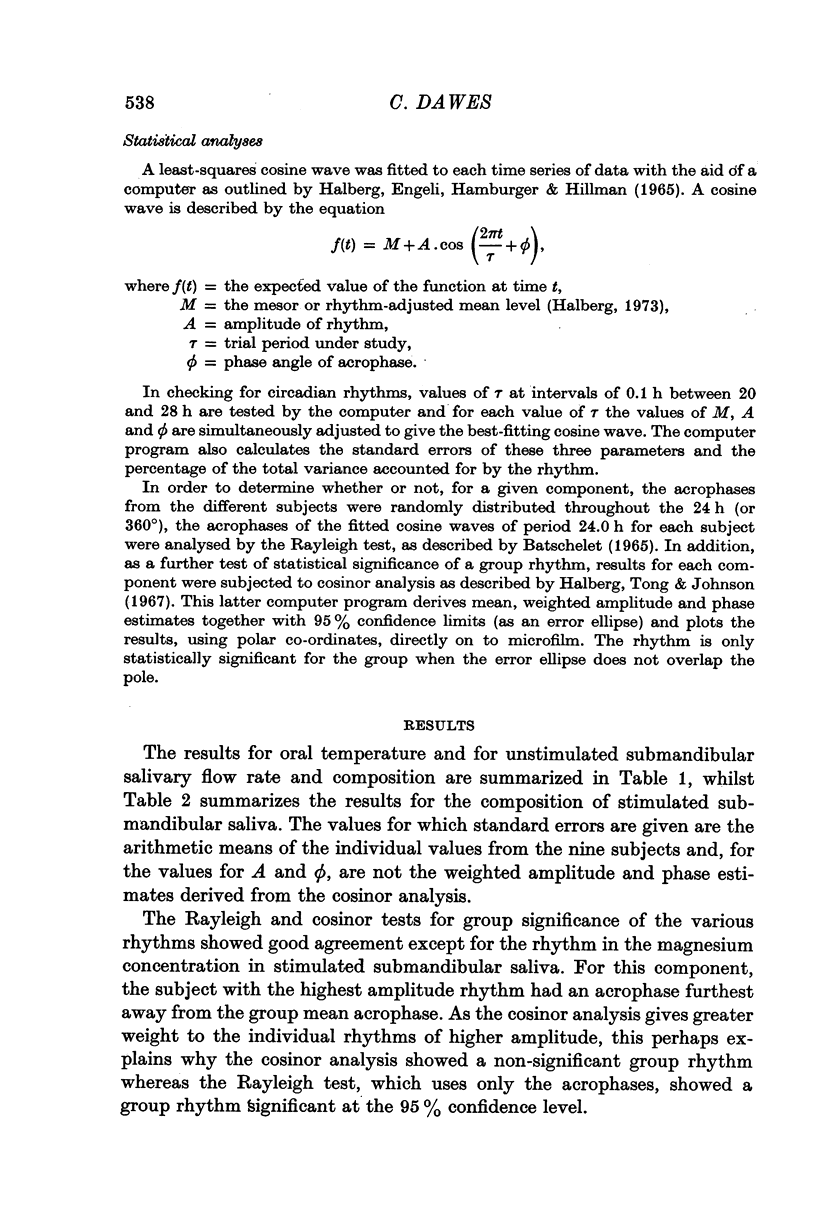
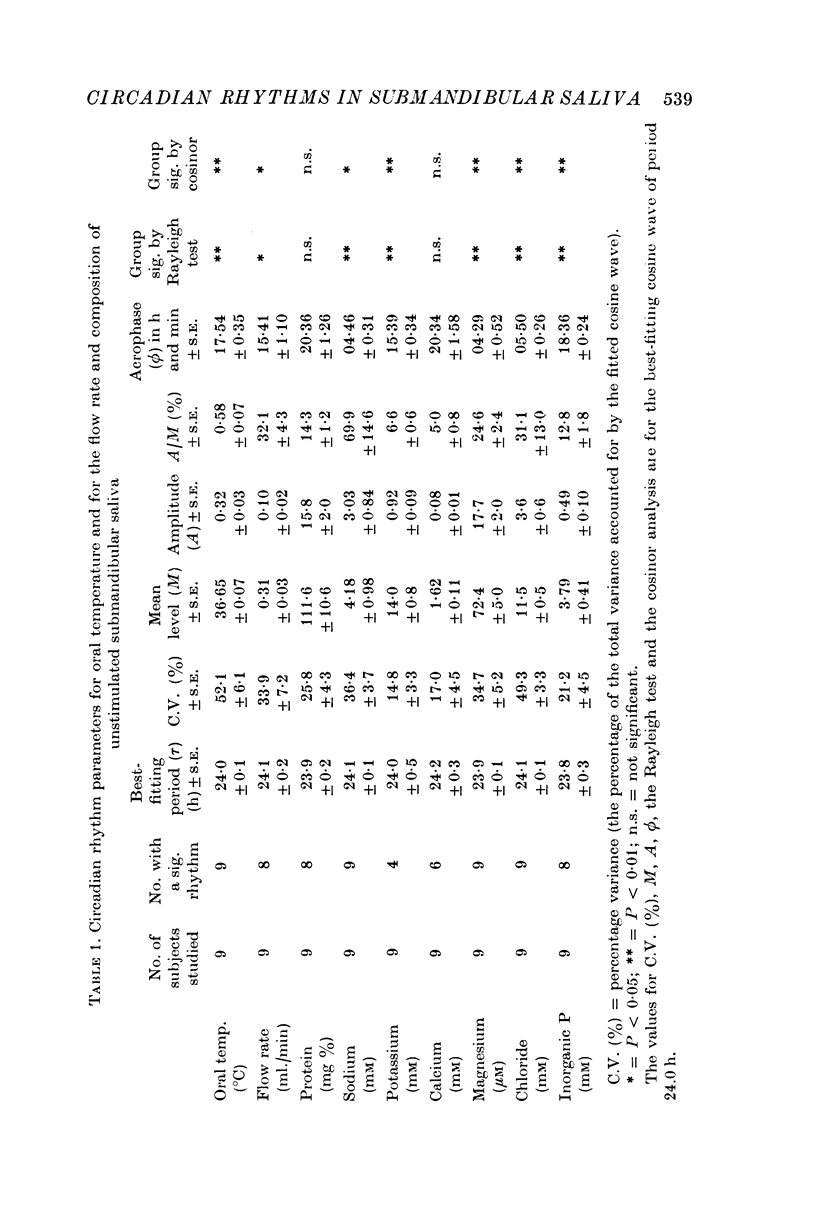
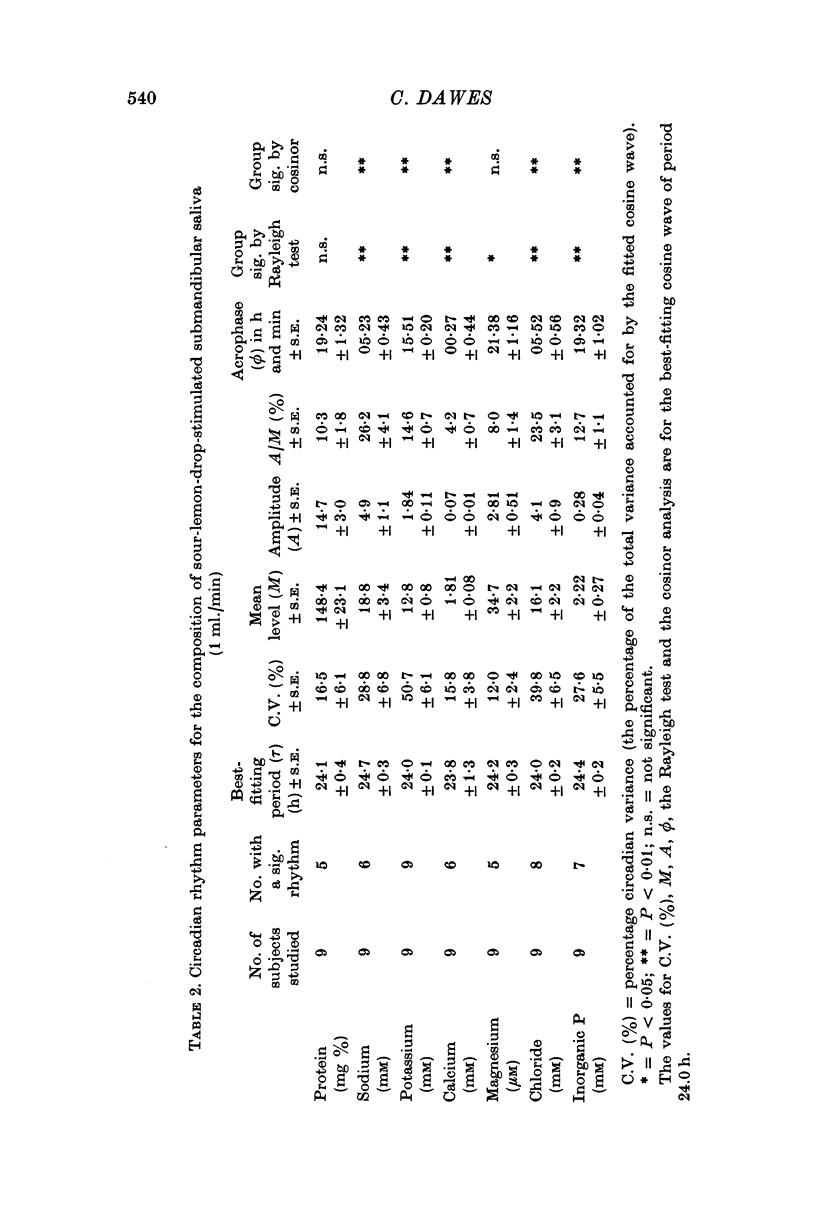
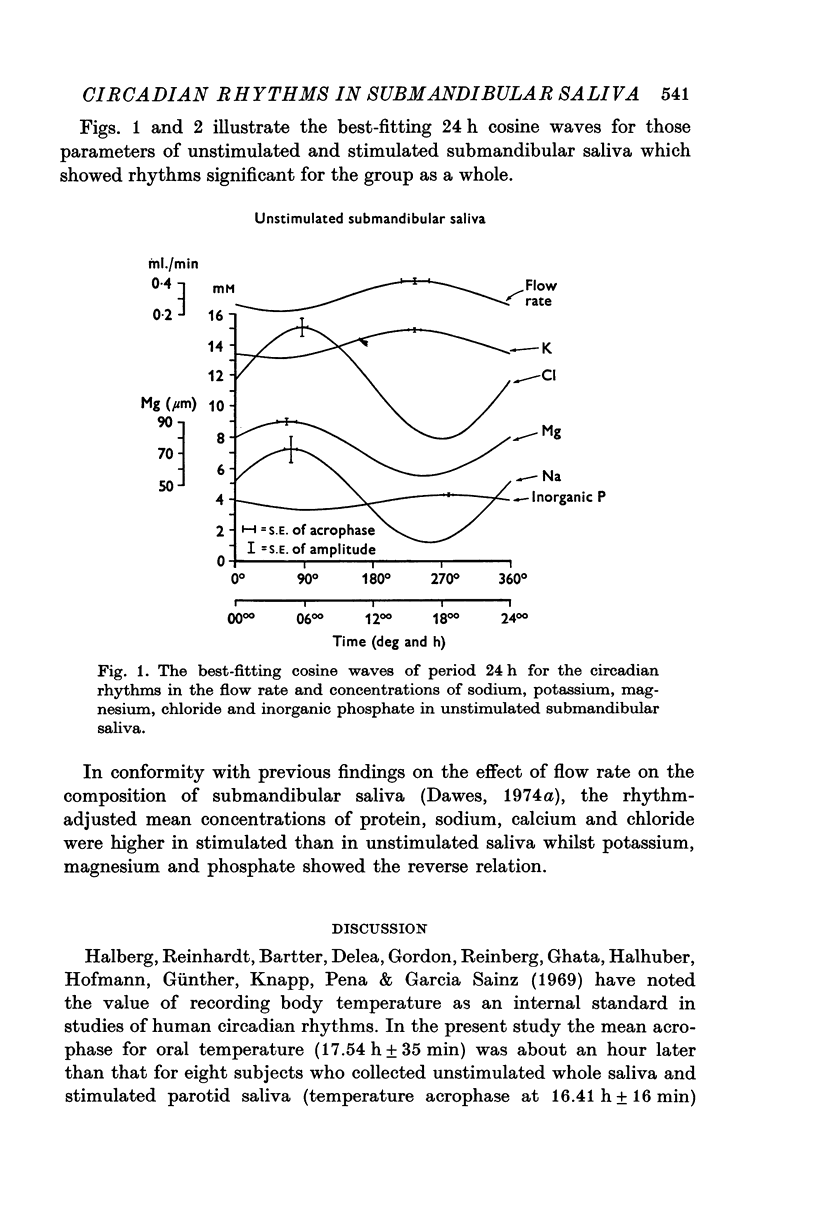
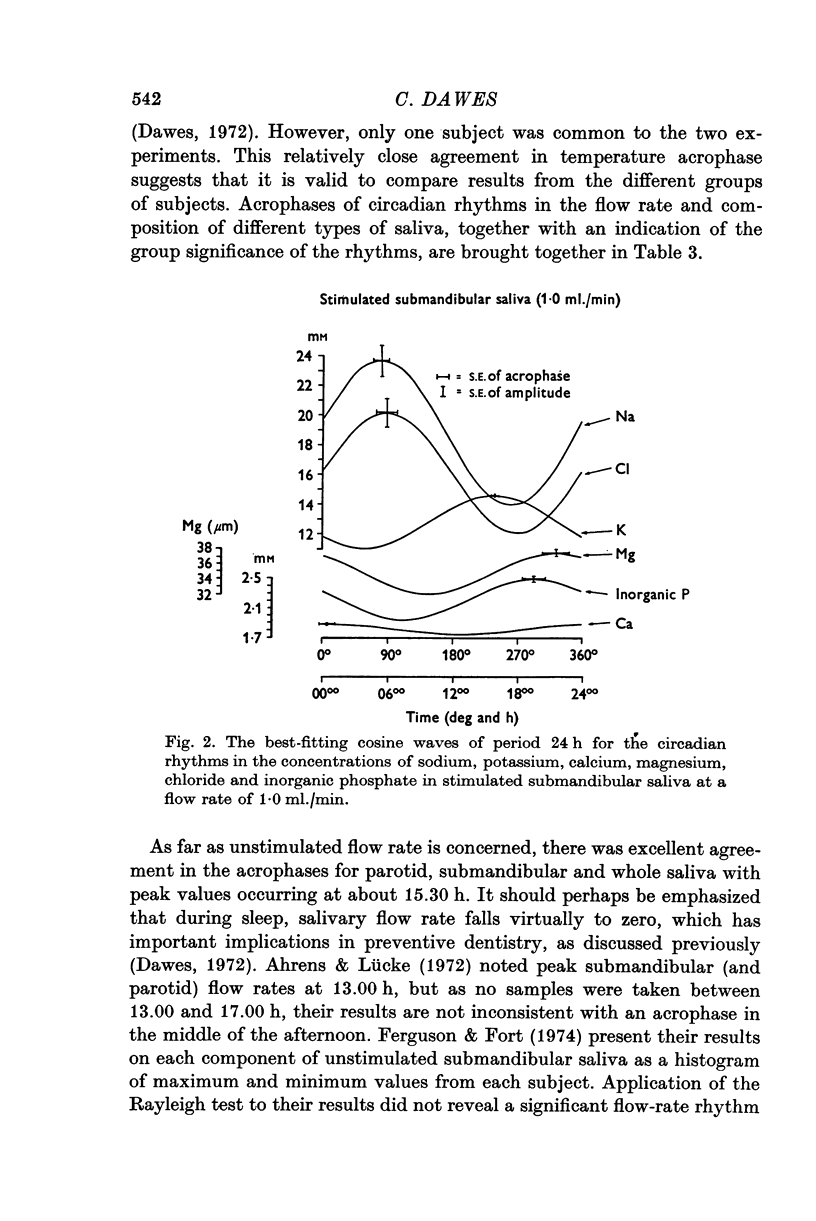
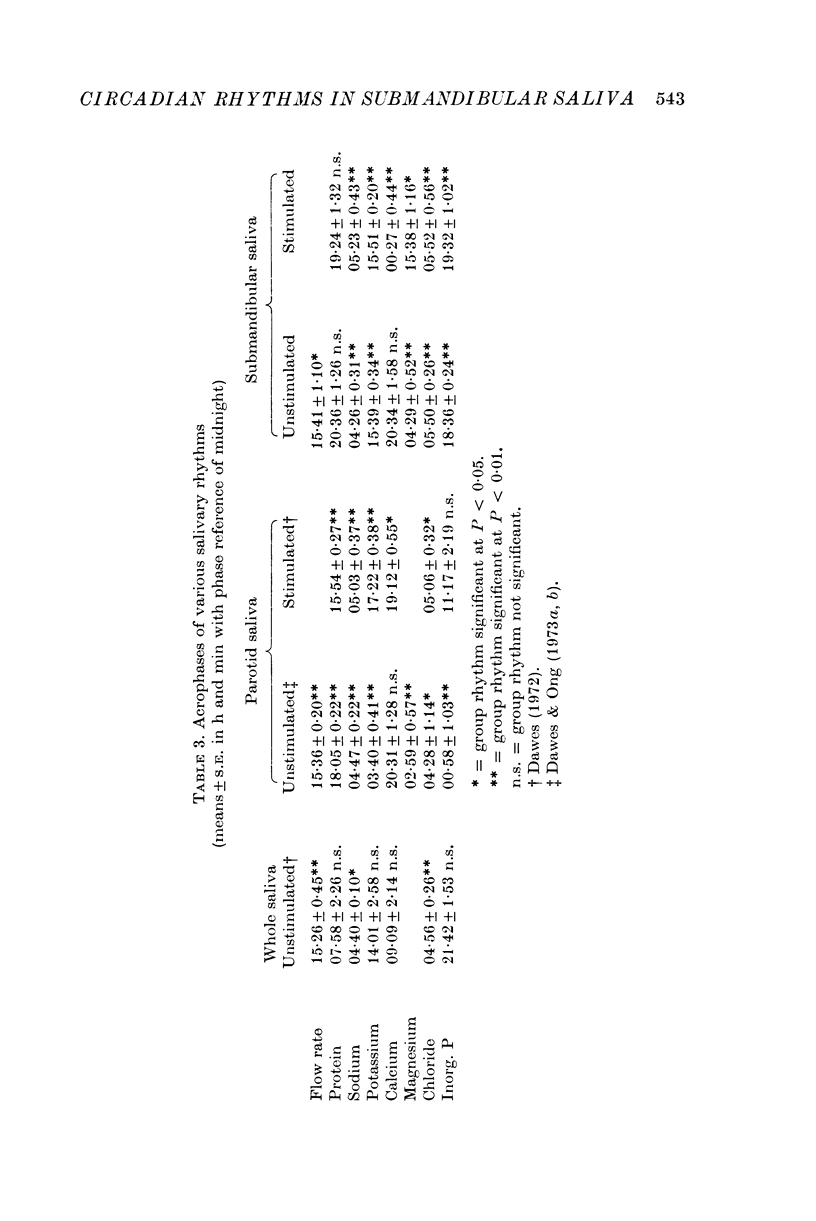
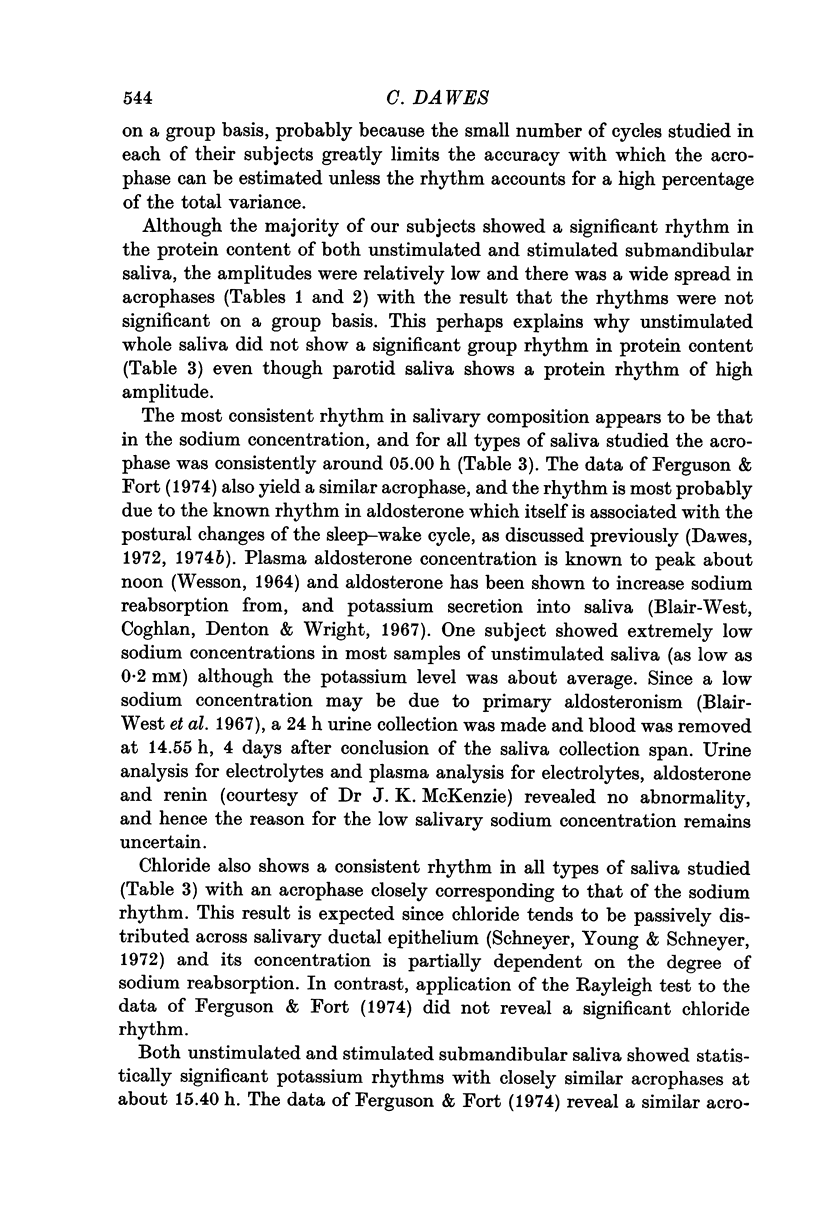
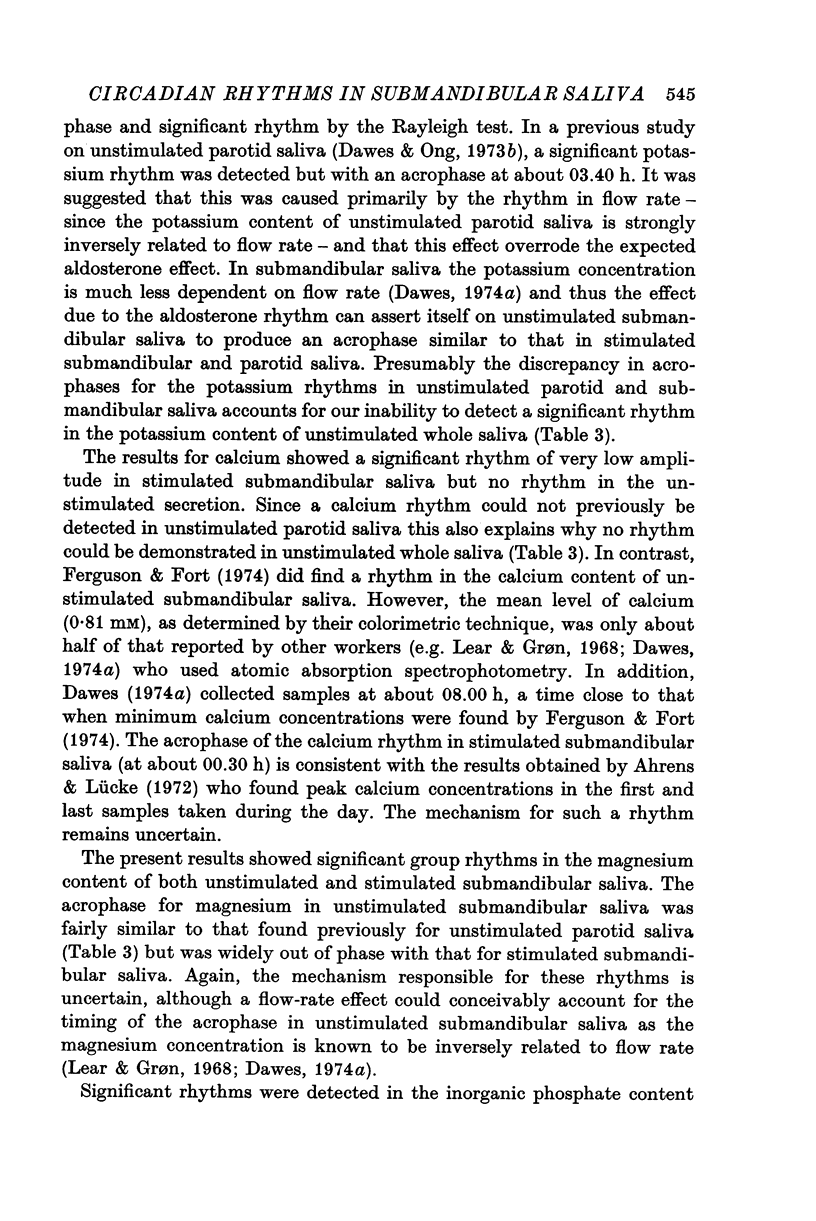
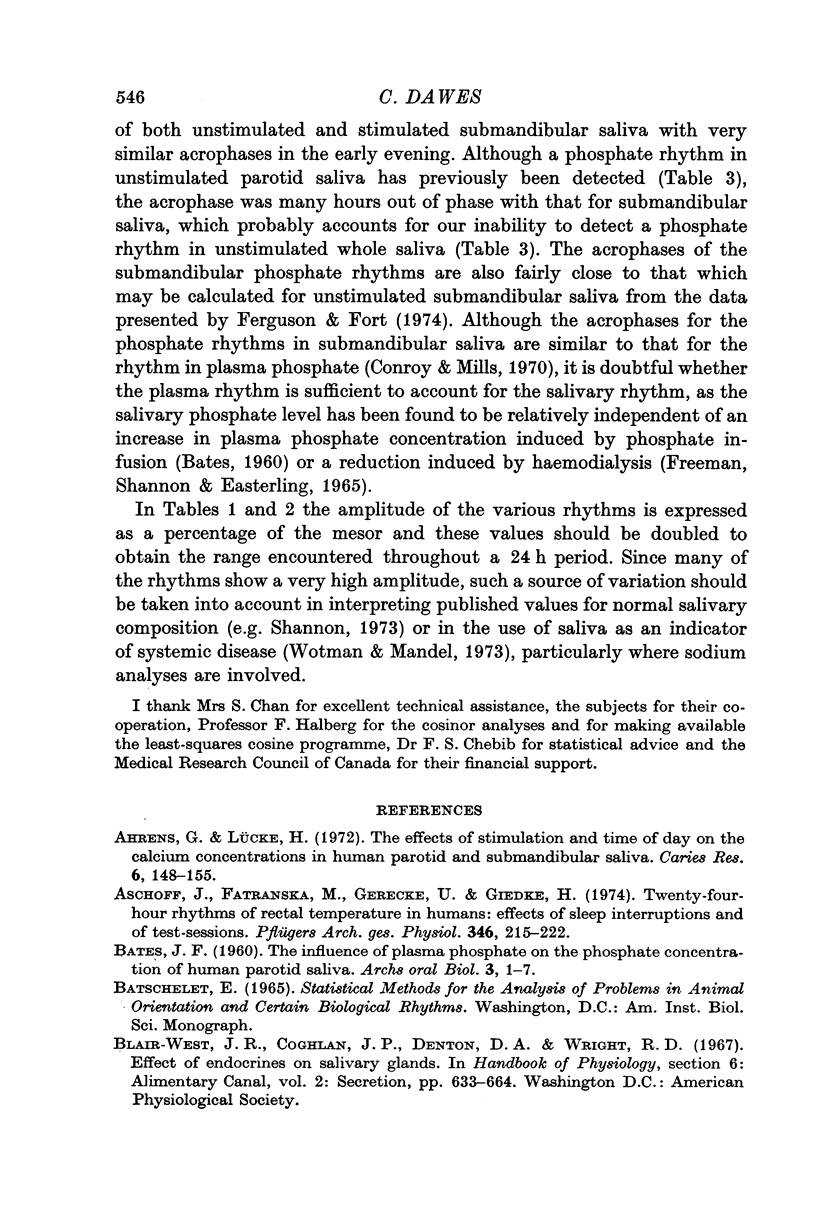
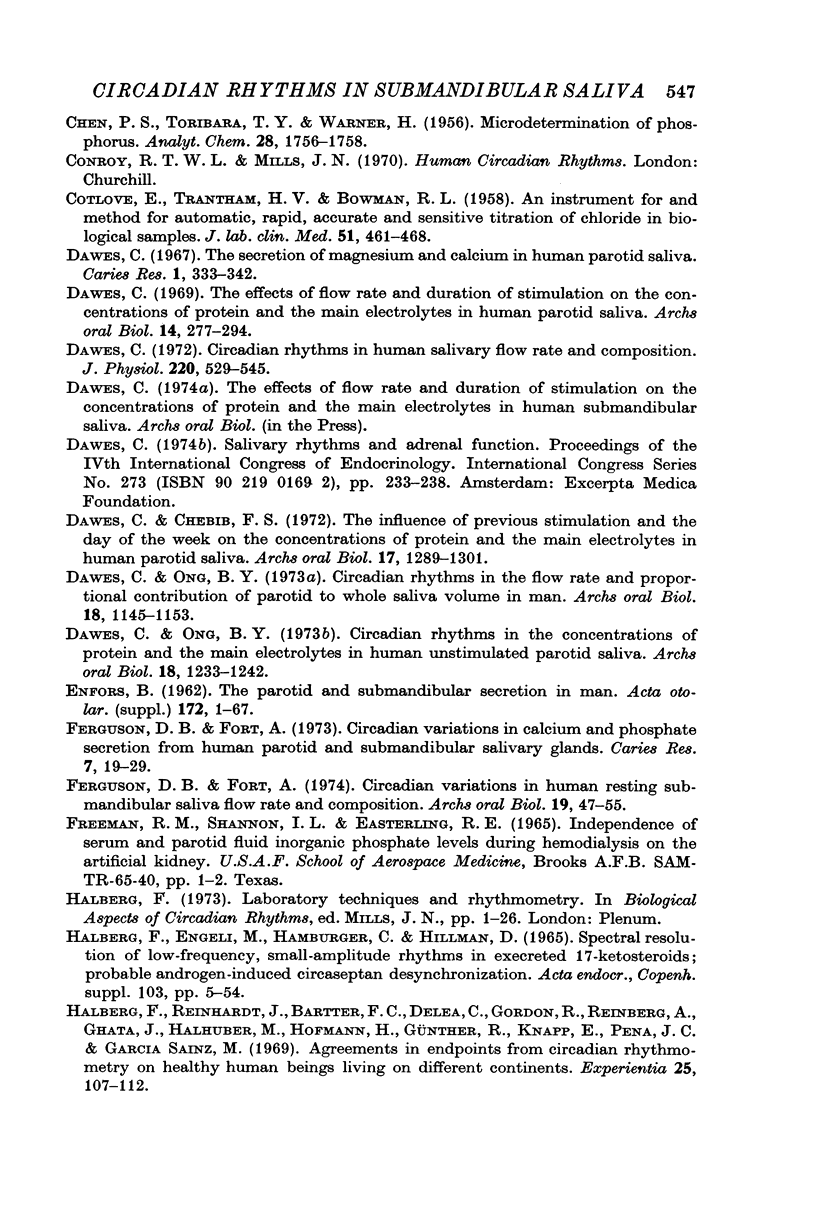
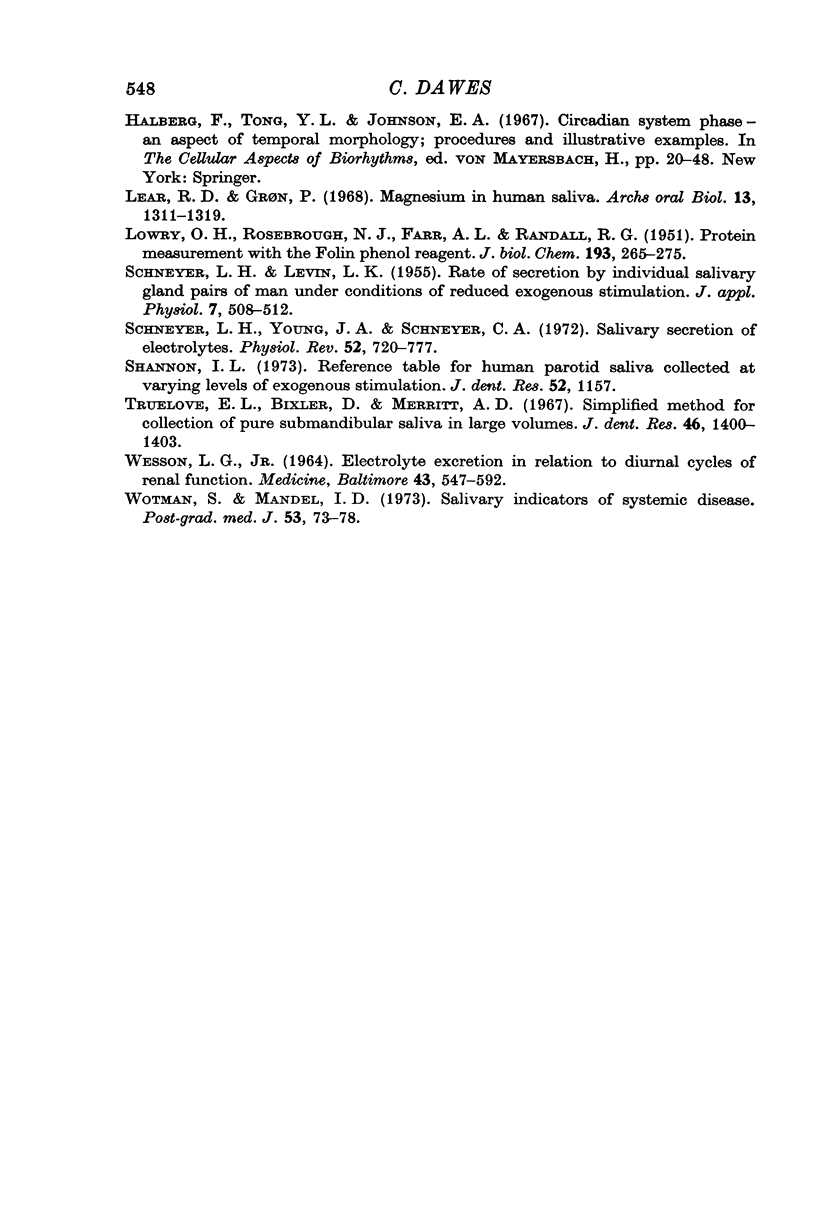
Selected References
These references are in PubMed. This may not be the complete list of references from this article.
- Ahrens G., Lücke H. The effects of stimulation and time of day on the calcium concentrations in human parotid and submandibular saliva. Caries Res. 1972;6(2):148–155. doi: 10.1159/000259786. [DOI] [PubMed] [Google Scholar]
- Aschoff J., Fatranska M., Gerecke U., Giedke H. Twenty-four-hour rhythms of rectal temperature in humans: effects of sleep-interruptions and of test-sessions. Pflugers Arch. 1974;346(3):215–222. doi: 10.1007/BF00595708. [DOI] [PubMed] [Google Scholar]
- COTLOVE E., TRANTHAM H. V., BOWMAN R. L. An instrument and method for automatic, rapid, accurate, and sensitive titration of chloride in biologic samples. J Lab Clin Med. 1958 Mar;51(3):461–468. [PubMed] [Google Scholar]
- Dawes C., Chebib F. S. The influence of previous stimulation and the day of the week on the concentrations of protein and the main electrolytes in human parotid saliva. Arch Oral Biol. 1972 Sep;17(9):1289–1301. doi: 10.1016/0003-9969(72)90162-8. [DOI] [PubMed] [Google Scholar]
- Dawes C. Circadian rhythms in human salivary flow rate and composition. J Physiol. 1972 Feb;220(3):529–545. doi: 10.1113/jphysiol.1972.sp009721. [DOI] [PMC free article] [PubMed] [Google Scholar]
- Dawes C., Ong B. Y. Circadian rhythms in the concentrations of protein and the main electrolytes in human unstimulated parotid saliva. Arch Oral Biol. 1973 Oct;18(10):1233–1242. doi: 10.1016/0003-9969(73)90035-6. [DOI] [PubMed] [Google Scholar]
- Dawes C., Ong B. Y. Circadian rhythms in the flow rate and proportional contribution of parotid to whole saliva volume in man. Arch Oral Biol. 1973 Sep;18(9):1145–1153. doi: 10.1016/0003-9969(73)90088-5. [DOI] [PubMed] [Google Scholar]
- Dawes C. The effects of flow rate and duration of stimulation on the condentrations of protein and the main electrolytes in human parotid saliva. Arch Oral Biol. 1969 Mar;14(3):277–294. doi: 10.1016/0003-9969(69)90231-3. [DOI] [PubMed] [Google Scholar]
- Dawes C. The secretion of magnesium and calcium in human parotid saliva. Caries Res. 1967;1(4):333–342. doi: 10.1159/000259533. [DOI] [PubMed] [Google Scholar]
- ENFORS B. O. The parotid and submandibular secretion in man. Quantitative recordings of the normal and pathological activity. Acta Otolaryngol Suppl. 1962;172:1–67. [PubMed] [Google Scholar]
- Ferguson D. B., Fort A. Circadian variations in calcium and phosphate secretion from human parotid and submandibular salivary glands. Caries Res. 1973;7(1):19–29. doi: 10.1159/000259821. [DOI] [PubMed] [Google Scholar]
- Ferguson D. B., Fort A. Circadian variations in human resting submandibular saliva flow rate and composition. Arch Oral Biol. 1974 Jan;19(1):47–55. doi: 10.1016/0003-9969(74)90224-6. [DOI] [PubMed] [Google Scholar]
- Halberg F., Reinhardt J., Bartter F. C., Delea C., Gordon R., Reinberg A., Ghata J., Halhuber M., Hofmann H., Günther R. Agreement in endpoints from circadian rhythmometry on healthy humans beings living on different continents. Experientia. 1969 Jan 15;25(1):107–112. doi: 10.1007/BF01903927. [DOI] [PubMed] [Google Scholar]
- LOWRY O. H., ROSEBROUGH N. J., FARR A. L., RANDALL R. J. Protein measurement with the Folin phenol reagent. J Biol Chem. 1951 Nov;193(1):265–275. [PubMed] [Google Scholar]
- Lear R. D., Gron P. Magnesium in human saliva. Arch Oral Biol. 1968 Nov;13(11):1311–1319. doi: 10.1016/0003-9969(68)90155-6. [DOI] [PubMed] [Google Scholar]
- SCHNEYER L. H., LEVIN L. K. Rate of secretion by individual salivary gland pairs of man under conditions of reduced exogenous stimulation. J Appl Physiol. 1955 Mar;7(5):508–512. doi: 10.1152/jappl.1955.7.5.508. [DOI] [PubMed] [Google Scholar]
- Schneyer L. H., Young J. A., Schneyer C. A. Salivary secretion of electrolytes. Physiol Rev. 1972 Jul;52(3):720–777. doi: 10.1152/physrev.1972.52.3.720. [DOI] [PubMed] [Google Scholar]
- Shannon I. L. Reference table for human parotid saliva collected at varying levels of exogenous stimulation. J Dent Res. 1973 Sep-Oct;52(5):1157–1157. doi: 10.1177/00220345730520053401. [DOI] [PubMed] [Google Scholar]
- Truelove E. L., Bixler D., Merritt A. D. Simplified method for collection of pure submandibular saliva in large volumes. J Dent Res. 1967 Nov-Dec;46(6):1400–1403. doi: 10.1177/00220345670460064301. [DOI] [PubMed] [Google Scholar]
- WESSON L. G., Jr ELECTROLYTE EXCRETION IN RELATION TO DIURNAL CYCLES OF RENAL FUNCTION. Medicine (Baltimore) 1964 Sep;43:547–592. doi: 10.1097/00005792-196409000-00002. [DOI] [PubMed] [Google Scholar]
- Wotman S., Mandel I. D. Salivary indicators of systemic disease. Postgrad Med. 1973 Mar;53(3):73–78. doi: 10.1080/00325481.1973.11713392. [DOI] [PubMed] [Google Scholar]


